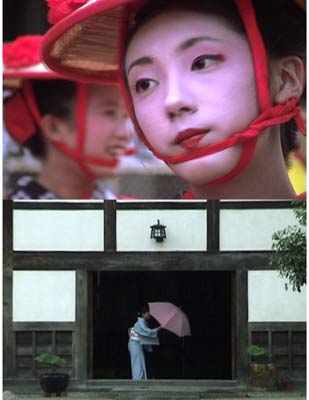Bolder (if not bigger) than Blockbuster
Media Resources Center combats the documentarian’s primary woe: anonymity
![]()
| 05 June 2003
| |  The 4th Dimension is the latest film by Bay Area documentarian Trinh T. Minh-Ha, professor of women’s studies, rhetoric, and film at Berkeley. |
Gary Handman isn’t absolutely sure, but he believes that the campus Media Resources Center may house the largest single collection of documentary films in the United States. “Certainly no other institution collects in the depth that we do,” he says emphatically. “Other places have strong focused collections, but in terms of scope, we’re the largest.”
Handman is the MRC’s director, charged with acquiring, organizing, and facilitating the use of the center’s resources. He’s also concerned with making people aware of them: “Film studies scholars know about us, of course, but other parts of the campus community are often astounded” to learn about the 25,000-some titles in the collection, many of which are independently produced documentaries — “the kinds of provocative and often controversial works you won’t find at Blockbuster” or even public libraries, according to Handman.
A lot more people will become aware of the MRC’s holdings during the months that “Reel Life Stories,” an exhibit highlighting the center’s film and video collections, is on display in Doe Library’s Bernice Layne Brown Gallery. Stacks-bound scholars may stride purposefully past the exhibit cases packed with video boxes, film stills, workhorse movie cameras, and portraits of Bay Area documentarians — but they’ll certainly notice the film clips being projected continuously on the wall near the library entrance.
“I was over there the other day,” Handman said from his Moffitt Library office recently, “and saw 15 people just standing totally still, mesmerized by a clip from Triumph of the Will.” Leni Reifenstahl’s 1934 film about the Nazi-era Nuremberg Rallies is a classic not just of the documentary and propaganda genres, but of film history generally, and has lost little of its power to command a viewer’s attention. It’s one of the more obviously iconic holdings in the MRC collection, says Handman, who spends much of his time tracking down and acquiring far less-well-known works by independent documentary filmmakers — whose fundraising challenges are the stuff of legend in the cinematic world, and many of whose creations he purchases from distributors who themselves often operate on the perilous edge of extinction.
Video librarians, says Handman, have a very close relationship with independent distributors, “because without them this stuff wouldn’t be available at all. They’re doing God’s work, making sure these filmmakers’ visions are being shared.” He cites as one example Women Make Movies, a distributor that has specialized for 25 years in documentary works by women filmmakers.
Near-anonymity is an occupational hazard for documentarians, whose efforts are screened, if they’re lucky, at film festivals or on public television and — with the exception of such high-profile commercial successes as Michael Moore’s Bowling for Columbine — rarely meet with much in the way of widespread public acceptance.
The academy is one more venue within which documentary films can be screened and appreciated. “We check out about 70,000 titles a year,” estimates Handman, “most of them for course-assigned viewing.” In his 19 years on the job, he’s seen campus use of the collection grow exponentially.
“It used to be just film studies, English and comparative literature, and foreign-language classes that were interested in our collections,” Handman says. “But now almost every humanities and social-sciences discipline is interested in film as an art form, as a kind of social ‘text,’ and as a cultural artifact that merits study from diverse scholarly angles. Women’s studies, political science, ethnic studies, language courses, rhetoric: At least a handful of people in every discipline are concentrating on film.”
It helps that younger faculty have been raised on media as much as their students have been, he says — though he also notes that “it’s sort of a dictum in libraries that the stronger, bigger, and broader your collection, the more it gets used.”
Handman says he wanted the Doe Library exhibit to accomplish two primary goals. First, to celebrate the history of documentary film, with a particular focus on past and present Bay Area independent filmmakers, including such relatively well-known figures as Les Blank, Steve Okazaki, and Bill Jersey as well as several documentarians with strong connections to the Berkeley campus (Jon Else, Trinh T. Minh-Ha, Loni Ding). Second, he wanted to highlight the breadth of the material in the MRC’s holdings, which range from early works by the pioneering Lumiere brothers to “stuff that’s appearing in festivals right now.”
“Reel Life Stories” will be on display through July. For more information about the Media Resources Center, visit http://www.lib.berkeley.edu/MRCor contact Handman at ghandman@library.berkeley.edu.

